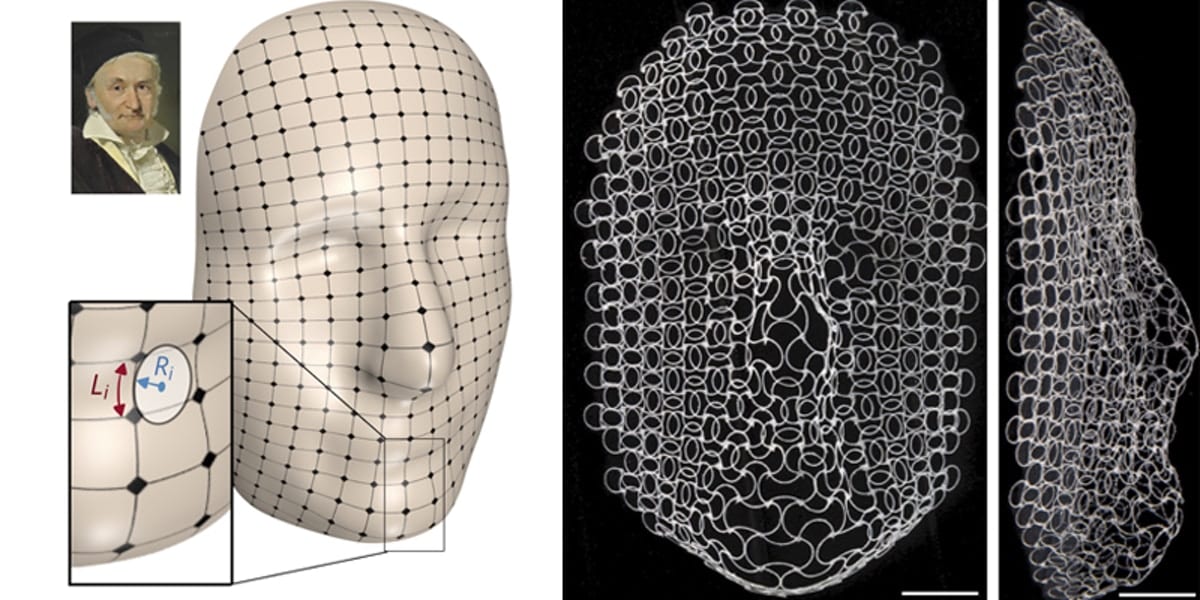What would it take to transform a flat sheet into a human face?
.
How would the sheet need to grow and shrink to form eyes that are concave into the face and a convex nose and chin that protrude?
.
How to encode and release complex curves in shape-shifting structures is at the center of research led by the Harvard John A. Paulson School of Engineering and Applied Sciences (SEAS) and Harvard’s Wyss Institute of Biologically Inspired Engineering. Over the past decade, theorists and experimentalists have found inspiration in nature as they have sought to unravel the physics, build mathematical frameworks, and develop materials and 3D and 4D-printing techniques for structures that can change shape in response to external stimuli.
However, complex multi-scale curvature has remained out of reach.
Now, researchers have created the most complex shape-shifting structures to date — lattices composed of multiple materials that grow or shrink in response to changes in temperature. To demonstrate their technique, team printed flat lattices that shape morph into a frequency-shifting antenna or the face of pioneering mathematician Carl Friedrich Gauss in response to a change in temperature.
Case Study: How PepsiCo achieved 96% cost savings on tooling with 3D Printing Technology
Above: PepsiCo food, snack, and beverage product line-up/Source: PepsiCo PepsiCo turned to tooling with 3D printing...




0 Comments